The Intel 6th Gen Skylake Review: Core i7-6700K and i5-6600K Tested
by Ian Cutress on August 5, 2015 8:00 AM EST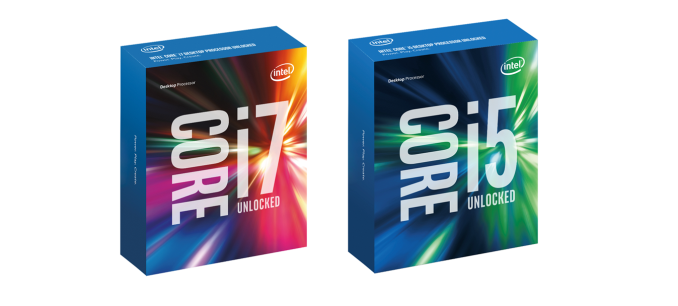
It’s the Intel review you’ve been waiting for. Today is the launch of the first two CPUs from Intel’s Skylake architecture, the 6th Generation Core i7-6700K and the Core i5-6600K. With the new processors we get a new architecture, a new socket, the move to DDR4 and the potential to increase both performance and efficiency at the same time. A lot of readers have asked the question – is it time to upgrade? We had a CPU or two in to test to answer that question.
Launch Day for Skylake-K: August 5th
For those in the industry, predicting Skylake’s launch has been a minefield. Even at Computex in June, some companies were discussing a large six-week window in which they expected Skylake but were waiting on official dates. But as we've seen with a number of previous Intel mainstream launches, Intel likes to aim at the gaming crowds release at a gaming events. It just so happens that today is Gamescom in Germany, two weeks before what everyone expected would be a launch at Intel’s Developer Forum in mid-August.
Today is a full launch for the Skylake-K processors, with the two CPUs being launched alongside new Z170 series motherboards and dual channel DDR4 memory kits. Having spoken to a few retailers, they have stock ready to go today. That being said, a number of them would have liked more stock on launch day, suggesting that they expect the processors to sell out rather quickly when the buy buttons are activated.
All the motherboard manufacturers should be ready to go as well – take a look at our breakdown of the retail motherboard information we could get before launch for a good overview of what to expect this generation. DDR4 manufacturers have been selling the new standard of memory for over a year due to Intel’s high-end X99 platform supporting it, but today will see the introduction of dual channel kits to go with the Skylake platform as well as a number of higher speed modules ready and waiting.
‘Where are the non-K processors?!’ you may ask. Intel tells us that these will be released later in the year, sometime in Q3. As a result, we have to wait and see what range of models come out at that point and we will get a number in to review.
Retail Packaging
To go with the launch is a new look of Intel's Core processor packaging, in part to appeal to the gaming crowd. As the gaming industry is considered one of the few remaining areas for potentially large growth in the PC industry, Intel is increasing its focus on gaming as a result.
Aside from changing the graphics on the box, it has been reported – and seemingly confirmed by the thinner boxes in the official pictures from Intel – that these processors will not be shipped with a stock Intel cooler. Users will have to purchase third party coolers. Part of this makes sense – overclocking processors need beefier cooling in order to extract the maximum overclock and buying something above the stock cooler should be good. The downside of not having a stock cooler means an added cost to the end user. However as the hole mounting for the new socket, LGA1151, is similar to that of LGA1150/1155/1156 – spacing is still 75mm – many existing CPU coolers for the current LGA115x sockets should be compatible, making it possible to reuse many coolers for no more than the cost of a new thermal paste application.
For users looking for a new air or liquid cooler, head on over to our recent roundup of Top Tier CPU Air Coolers Q3 2015: 9-Way Roundup Review and the Closed Loop AIO Liquid Coolers: 14-way Mega Roundup Review published last year.
The Skylake CPUs: Intel’s 6th Generation Core
Intel’s tick-tock strategy has been the bedrock of their application to bring new processors to the market, growing in terms of user experience for either power, efficiency, or both. It has been noted that certain generations either have an enterprise focus or a mobile-first focus, which always seems to tip the scales in one direction of the other. However, with the recent announcement of a third CPU line at 14nm called Kaby Lake for 2016, tick-tock just became tick-tock-tock.
| Intel's Tick-Tock Cadence | |||||
| Microarchitecture | Process Node | Tick or Tock | Release Year | ||
| Conroe/Merom | 65nm | Tock | 2006 | ||
| Penryn | 45nm | Tick | 2007 | ||
| Nehalem | 45nm | Tock | 2008 | ||
| Westmere | 32nm | Tick | 2010 | ||
| Sandy Bridge | 32nm | Tock | 2011 | ||
| Ivy Bridge | 22nm | Tick | 2012 | ||
| Haswell | 22nm | Tock | 2013 | ||
| Broadwell | 14nm | Tick | 2014 | ||
| Skylake | 14nm | Tock | 2015 | ||
| Kaby Lake (link)? | 14nm | Tock | 2016 ? | ||
Intel’s early issues with 14nm yields have been well documented and we won’t go into them here, but 14nm is a more expensive process with an increased number of lithography steps as we reach the limits of current semiconductor technology. FinFET was introduced back in 22nm, but to move down to 10nm makes either the current process more expensive or other methods have to be used. As a result, we see Moore’s Law stretching out from an 18-24 month cadence to a 24-30 month cadence for the first time in fifty years. As we’ve seen with the graphics card market recently stalling at 28nm, there is a need (or at least opportunity) to develop more power efficient architectures rather than just relying on die shrinks to do it for you.
Future development aside, today Skylake will hit the shelves in the form of two overclockable processors, the Core i7-6700K and the Core i5-6600K.
| Intel i7 Lineup | |||
| i7-4770K | i7-5775C | i7-6700K | |
| Price | $339 | $366 | $350 |
| Cores | 4 | 4 | 4 |
| Threads | 8 | 8 | 8 |
| Base CPU Freq. | 3.5 GHz | 3.3 GHz | 4.0 GHz |
| Turbo CPU Freq. | 3.9 GHz | 3.7 GHz | 4.2 GHz |
| Graphics | HD 4600 (GT2) | Iris Pro 6200 (GT3e) | HD 530 (GT2) |
| EUs | 20 | 48 | 24 |
| iGPU Freq. | 1250MHz | 1100MHz | 1150MHz |
| TDP | 84W | 65W | 91W |
| DDR3/L Freq. | 1600MHz | 1600MHz | 1600MHz |
| DDR4 Freq. | - | - | 2133MHz |
| L3 Cache | 8MB | 6MB | 8MB |
| L4 Cache | None | 128MB (Crystal Well) | None |
| Interface | LGA1150 | LGA1150 | LGA1151 |
As with previous nomenclature, the i7 model will be quad core CPU with HyperThreading and 8MB of L3 cache. This matches up with the Haswell parts to which Skylake is more closely aligned (Desktop Broadwell is rather a blip, using an external on-package eDRAM and you can read our review here), in a large number of aspects including the other cache levels. The 6700K runs at a base frequency of 4.0 GHz and an all-core frequency of 4.2 GHz. This is a slight speed bump over the 4770K which was launched at the start of Haswell, but a minor reduction in clockspeeds compared to the i7-4790K, which was an upgraded Haswell part launched later under the name of ‘Devil’s Canyon’.
The integrated graphics nomenclature has changed, with the new i7-6700K having the Intel HD 530 graphics, compared to the HD4600 in the Haswell parts. We know that the HD 530, like the HD 4600, has 24 of Intel’s execution units in the iGPU, and they run at a peak frequency of 1150 MHz. The introduction of the HD 530 marks the launch of Intel’s 9th generation graphics, and we'll cover Gen9 in a bit more detail later.
| Intel i5 Lineup | |||
| i5-4670K | i5-5675C | i5-6600K | |
| Price | $242 | $276 | $243 |
| Cores | 4 | 4 | 4 |
| Threads | 4 | 4 | 4 |
| Base CPU Freq. | 3.4 GHz | 3.1 GHz | 3.5 GHz |
| Turbo CPU Freq. | 3.8 GHz | 3.6 GHz | 3.9 GHz |
| Graphics | HD 4600 (GT2) | Iris Pro 6200 (GT3e) | HD 530 (GT2) |
| EUs | 20 | 48 | 24 |
| iGPU Freq. | 1200MHz | 1100MHz | 1150MHz ? |
| TDP | 84W | 65W | 91W |
| DDR3/L Freq. | 1600MHz | 1600MHz | 1600MHz |
| DDR4 Freq. | - | - | 2133MHz |
| L3 Cache | 6MB | 4MB | 6MB |
| L4 Cache | None | 128MB (Crystal Well) | None |
| Interface | LGA1150 | LGA1150 | LGA1151 |
The i5 model for Skylake also has quad cores, but without HyperThreading and only 6MB of L3 cache. Like the i7, it also has the Intel HD 530 graphics but operates at a lower frequency band.
Both the Skylake processors will support DDR4 and DDR3L memory in order to ease the transition to DDR4 for the mainstream segment, although it should be said that DDR3L is implemented here due to its lower than standard DDR3 operating voltage of 1.35 volts. This more closely aligns with DDR4’s standard voltage of 1.20 volts or the high end DDR4 kits at 1.35 volts, and as a result we are told that motherboards that support DDR3L will typically only be qualified to run DDR3L kits, rather than DDR3 kits.
This leads onto the point that both of the K processors for Skylake sit at 91W, which is a small increase over Haswell at 84W and Devil’s Canyon at 88W. In the past Intel has historically run a 1:1 policy whereby a 1% performance gain must come at a maximum of a 1% power penalty – this was adjust to 2:1 for Broadwell, and we should assume that Skylake had similar requirements during the planning stage. Depending on the specific architecture details, one potential source for this increase in power consumption may be the dual memory controller design, although Skylake has a significant number of features to differentiate itself from Haswell.


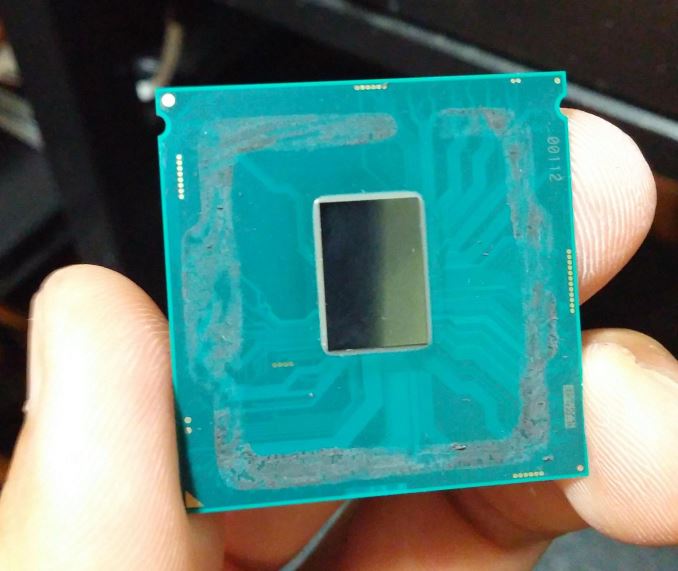
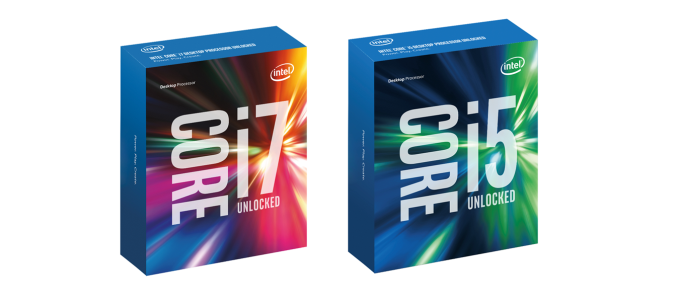
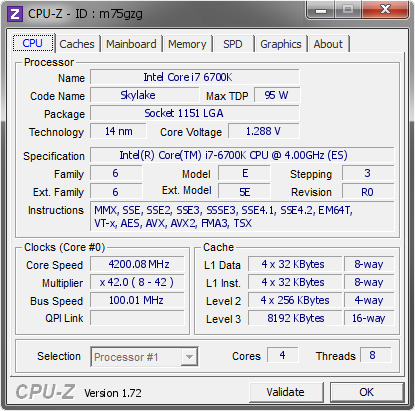
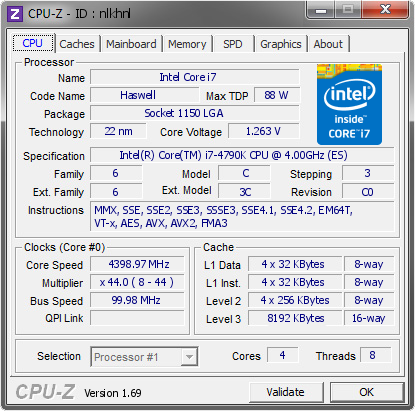
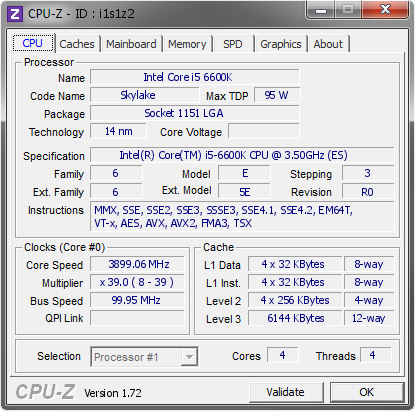
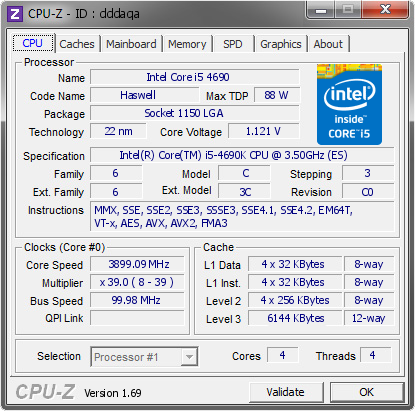








477 Comments
View All Comments
medi03 - Thursday, August 6, 2015 - link
Yeah. Blaming Intel that HP didn't want to use FASTER AMD CPUs FOR FREE, fearing Intel's illegal revenge is just nuts.AMD Athlon 64's beat Intel in all regards, they were faster, cheaper and less power hungry. Yet Intel was selling several times more Prescotts,
Not being able to profit even in a situation when you have superior product (despite much modest R&D budget), yeah, why blame intel.
MrBungle123 - Sunday, August 9, 2015 - link
In the Athlon 64 days, yes, AMD had a better product but the cold hard truth behind the curtain was that AMD didn't have the manufacturing capacity to supply everyone that Intel was feeding chips to.silverblue - Thursday, August 6, 2015 - link
A "tweaked 8-core Ph2"? Putting aside the fact that significant changes would've been required to the fetch and retire hardware (the integer units themselves were very capable but were underutilised), a better IMC and all the modern instruction sets that K10 didn't support, AMD had already developed its replacement. It probably would've buried them to have to shelve Bulldozer (twice, it turns out) and redevelop what was essentially a 12-year old micro-architecture.AMD were under pressure to deliver Bulldozer hence the cutting of corners and the decision to go with GF's poor 32nm process as they simply didn't have any alternative (plus I imagine they were promised far more than GF could deliver). Phenom II was not enough against Nehalem, let alone Sandy Bridge.
Blaming Intel doesn't help either as AMD couldn't exactly saturate the market with their products even when they were fabbing them themselves, however I think the huge drop in mainstream CPU prices when Core 2 was released along with the huge price paid for ATi did more damage than any bribing of retailers and systems manufacturers.
nikaldro - Wednesday, August 5, 2015 - link
40% over excavator, with 8 cores, good clockspeeds and good pricing doesn't sound that bad. I'll wait till Zen comes out, then decide.Spoelie - Thursday, August 6, 2015 - link
IPC difference between piledriver and skylake amounts to 80%... Lets hope excavator's IPC is better than anticipated and 40% is sandbagging it a bit.Given AMD's track record of overpromising and underdelivering, I'm afraid Zen will massively disappoint.
Asomething - Thursday, August 6, 2015 - link
Well it will only be behind by something like 15-25% if the difference between piledriver and skylake is 80% since piledriver to excavator is supposed to be a good 20% jump. If amd can manage to catchup in any meaningful way and make chips that can touch 5ghz then things might turn out ok.mapesdhs - Thursday, August 6, 2015 - link
Catchup will not be good enough. They need to be usefully competitive to pull people away from Intel into a platform switch, especially business, who have to think about this sort of thing for the long haul, and AMD's track record has been pretty woeful in this regard. I hope they can bring it to the table with Zen, but I'll believe it when I see it. Highly unlikely Intel isn't planning to either splat its prices or shove up performance, etc., if they need to when Zen comes out, especially for consumer CPUs. We know what's really possible based on how many cores, TDP, clock rates, etc. are used for the XEONs, but that potential just hasn't been put into a consumer chip yet.Remember, Intel could have released an 8-core for X79, but they didn't because there was no need; indeed the 3930K *is* an 8-core, just with 2 cores disabled (read the reviews). Ever since then, again and again, Intel has held back what it's perfectly capable of producing if it wanted to. The low clock of the 5960X is yet another example, it could easily be much higher.
MapRef41N93W - Friday, August 7, 2015 - link
You're assuming it's going to be a flat 40% over Excavator and not a best case scenario 40% (like every single AMD future performance projection always is...). It's more than likely a flat 20% IPC increase which puts it even behind Nehalem IPC wise.Top off the fact that it's AMD's first FinFET part (look at the penalty Intel paid in clockspeed with the transition to FinFET with IB/HW) and a transition to a new scalable uARCH (again look at the clockspeed hit Intel took when going from Netburst to scalable core arch, very similar to what AMD is doing now actually) and I can see Zen parts clocking horribly on top of that. Being on a Samsung node that is designed with low power in mind won't help their case either.
You may get an 8 core Zen part for $300-$400 but it probably won't clock worth a damn and end up at 3.5-4GHz on average. So it would be a much worse choice than a 5820k for most people.
mapesdhs - Wednesday, August 12, 2015 - link
Btw, I wasn't assuming anything about Zen, I really haven't a clue how it'll compare to Intel's offerings of the day. I hope it's good, but with all that's happened before, I hope for the best but expect the worst, though I'd like to be wrong.Azix - Friday, August 21, 2015 - link
You guys are being pretty negative on AMD. AMD tried to do an 8core chip on 32nm, maybe that was their mistake. The market wasn't even ready considering how long that way and where we are now. I do think intel got them pretty badly with their cheatingThe next processors are on a much better process. Based on the process alone we would expect a significant bit more performance than some seem willing to allow. Not to mention the original architecture was designed on a 32nm process. It's no surprise it would fall that far behind intel who is currently on 14nm. As time progresses though, those process jumps will take intel longer and longer. AMD will be much closer. Next year will be the first these two are on the same process (similar anyway). in a long while and it will last till at least 2017. AMD should be able to pick up some CPU sales next year and hopefully return to profitability. Intel also enjoys ddr4 support.
Stop pushing old 32nm architectures and crappy motherboards.